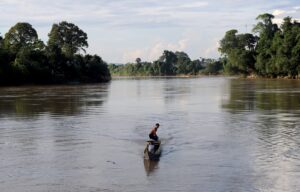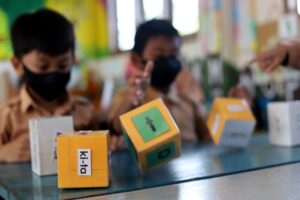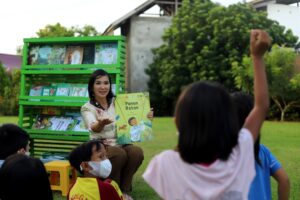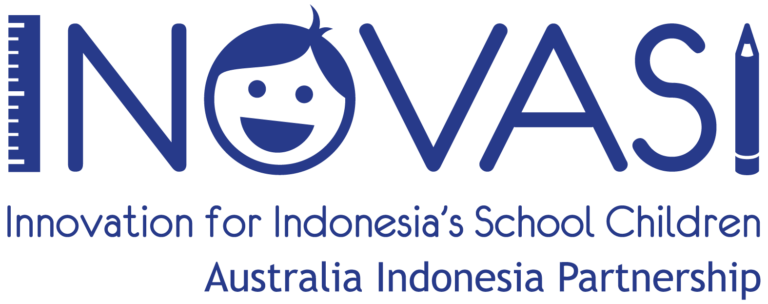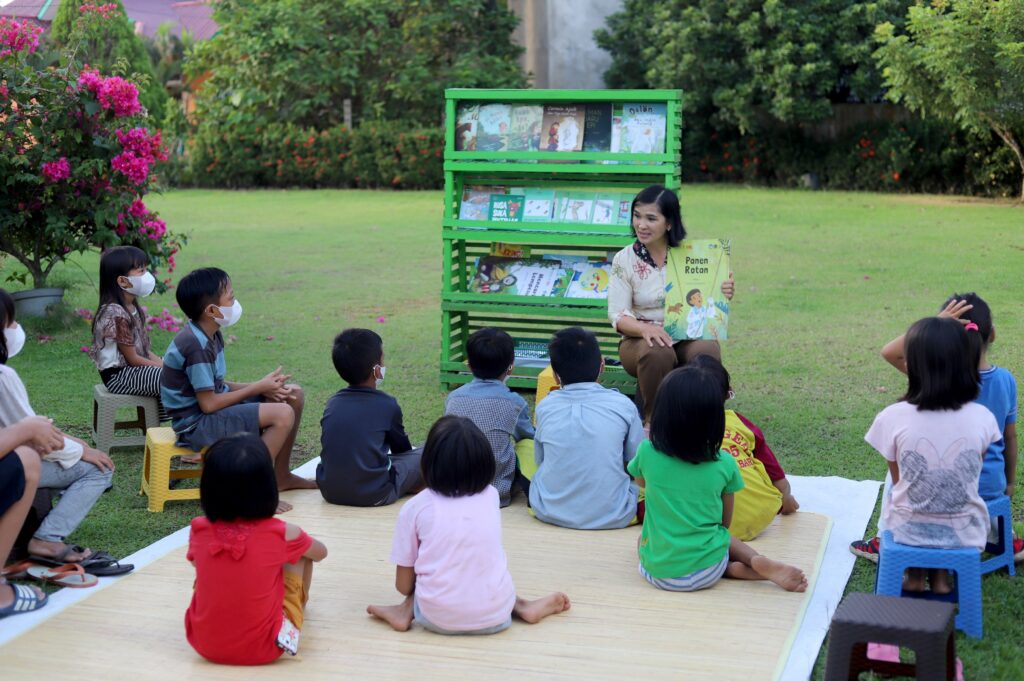
During the COVID-19 pandemic, teachers experienced various obstacles in teaching and learning activities. In North Kalimantan, Uring I,ing, a teacher of grade 1 at SDN 011 Teluk Sanggan, Malinau Kota Subdistrict, shared her experiences in coping with these challenges and providing literacy learning for students and children around her.
As a grade 1 teacher at SDN 011 Teluk Sanggan, Malinau Kota Subdistrict, in each new academic year, Uring is used to teach new students she had never met before. Early in pandemic, it was impossible to meet her students in person; thus, she only knew her students by referring to the lists of students’ names.
To know her students better, Uring started by watching videos of the students’ introduction sent by parents or guardians of students via mobile phone. During distance learning, she sent learning materials in the form of student activity sheets via WhatsApp. However, in her case, not all parents had mobile phones, making it challenging for Uring to contact parents individually. WhatsApp groups were ineffective as only a few parents could join.
Further, Uring also decided to visit the students’ homes one by one, especially those whose parents do not have mobile phones. She utilised this chance to get closer to parents and students.
It is common for grade 1 students at the primary school level not to have mastery of reading skills. Most students cannot yet recognise letters since they have started only to observe the shapes of letters in grade 1. Apart from these, when she started the new academic year during the pandemic she also found a student who was not yet able to speak fluently. “This became the most challenging problem I faced. I found it complex and was puzzled about what to teach this student with speaking challenges,” Uring recalled her memories. She racked her brain to figure out a strategy so this special student can progress.
When limited face-to-face learning started in 2021, Uring leveraged this opportunity to assist her students in catching up on their learning. In face-to-face sessions, Uring introduced the alphabets and phonetics using picture cards and word cards. “I keep giving them excercises until the students can recognise the letters. Then, I continued to reading syllables and words. The media used included cards with familiar pictures and word cards,” she told her method of teaching new students enthusiastically.
Thankfully, most students can now read words, and some are even fluent. Uring always strived to create learning media in the classroom according to the needs of the students; this eases the teaching and helps students to understand the materials taught.
“To be honest, the beginning of the pandemic I was confused. I didn’t know what to teach in an emergency setting like that. I was grateful that the Education and Culture Office (Disdikbud) of Malinau gave us their attention. They trained teachers to conduct learning activities during the pandemic by adopting special condition curriculum (emergency curriculum), conducting formative assessments, and organising literacy programs,” said Uring.
At the school level, the Teacher Working Group (Kelompok Kerja Guru or KKG) carried out the training and mentoring program. At the next level the Cluster Facilitators provided trainings, after which teachers applied the training materials in their respective classes under the direction of the Cluster Facilitators.
“This training pattern is not new for us in Malinau. In 2019-2020, we received literacy training for early grades with a training and mentoring pattern. The training was provided by the Education and Culture Office of Malinau in collaboration with the Innovation for Indonesia’s School Children (INOVASI) program. We adopted and improved the materials and pattern of this training to organise learning during the pandemic,” she explained.
Community Reading Park Initiative
At the beginning of the pandemic, Uring realised children in her neighbourhood had nothing to do. They ran here and there; some fought, and some cried. To give them something to do, she invited the children to gather at her house and read them storybooks.
At first, Uring read them a digital storybook from the Let’s Read application on her mobile phone. More and more children were coming to her house every day because they told their friends about the storybooks at Uring’s house and asked them to join in.
Uring could no longer use her mobile phone due to the increasing crowd. Therefore, she decided to take the initiative to borrow the school’s LCD. The illustrations in the storybooks they read could be displayed bigger.
As more and more children came, Uring’s house could not accommodate them. Uring then made an unsuccessful attempt to relocate the children outside the house since the illustrations displayed on the LCD were invisible.
That experience inspired Uring to establish a Community Reading Garden (Taman Baca Masyarakat or TBM).
With the assistance of the Malinau Reading Family Association’s administrators (Ikatan Keluarga Baca Malinau or IKBM), Uring was able to borrow children storybooks. These were suitable for children; it fit the children’s book standards, both in terms of story content and number of sentences.
She opened the TBM activities at her house every Tuesday and Friday. She planned various activities, including independent reading, arranging letters, drawing, and storytelling. Sometimes, Uring invited the students for guessing games and other traditional games. In addition, she assisted students who had not recognised the alphabets yet and those with reading difficulties.
It turned out that parents and local officials responded positively to the TBM activities. At the Development Planning Forums (Musrenbang) of the neighbourhood unit, Uring suggested that the village fund the TBM activities, resulting in the residents’ absolute approval.
The COVID-19 pandemic has presented many challenges, but with perseverance, commitment, and creativity, all challenges can be overcome, as Uring has experienced.
